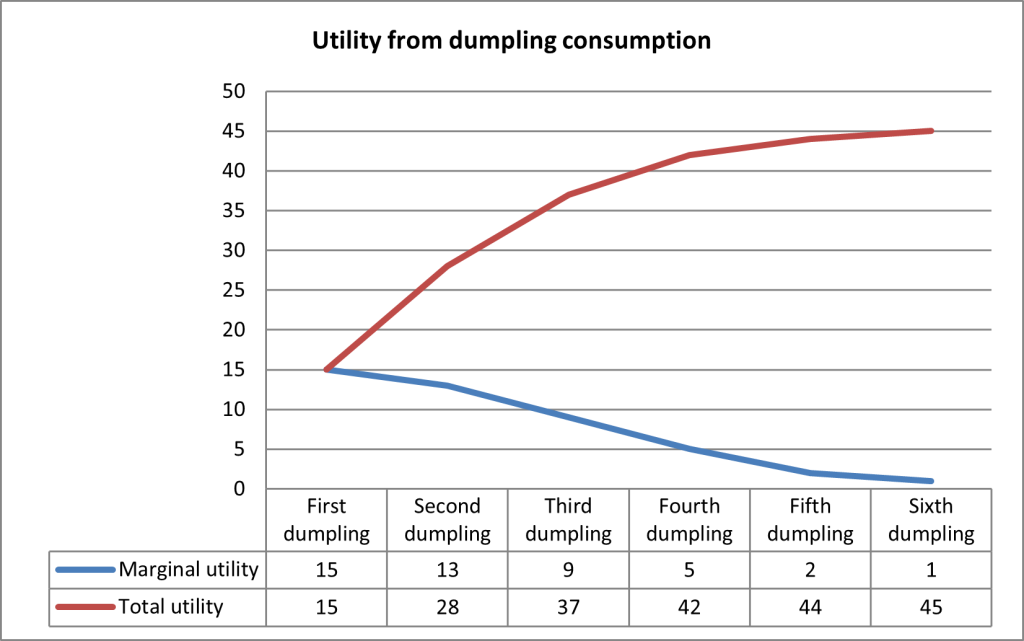Application Exercise 2c: Utitility

1) The graph for utility from dumpling consumption is shown below
2) As marginal utility declines total utility rises more slowly. This reflects the fact that each additional dumpling consumed yields less utility than the previous one and thus progressively adds less to total utility.
3) As the consumption of dumplings increases from 1 dumpling to 6 dumplings, the total satisfaction (i.e. total utility) from eating the dumplings increases from 15 utils to 45 utils. This means that the consumer’s total utility from consuming 6 dumplings is 45 utils. However, the marginal utility from consuming each successive dumpling falls (i.e. there is a diminishing marginal utility associated with dumpling consumption). This is highlighted by the blue marginal utility line in the above graph, with marginal utility falling from 15 for the 1st dumpling (suggesting that it increased satisfaction/utility by a relatively high degree) to a marginal utility of only one for the 5 dumpling (suggesting that satisfaction increased for the 6th dumpling but to a much lesser degree). It makes sense that the marginal or added satisfaction/utility from consuming each successive dumpling will get smaller and smaller. In fact, it is even possible for marginal utility to be negative (i.e. the total utility falls) once the level of dumpling consumption reaches a high enough level (e.g. the consumption of one additional dumpling beyond a certain point makes us nauseous).
4) A dumpling shop owner could offer a variety of dumplings such as pork, prawn and vegetable to encourage consumers to try a variety of dumplings. Different flavours are likely to provide their own unique sense of utility or satisfaction and in doing so this might encourage consumers to purchase more dumplings than they otherwise would. Bonding dumplings in packets of say 6 or 10 and offering them at an attractive price (better value for money might also encourage consumers to make more purchases. Both strategies are likely to lead to greater sales of dumplings and thus yield greater total revenue for dumpling shop owners.
